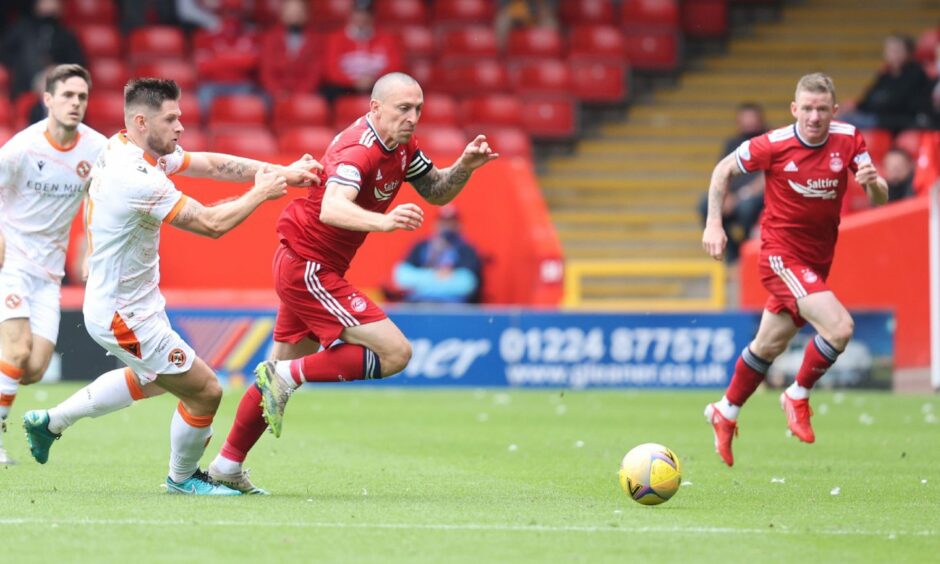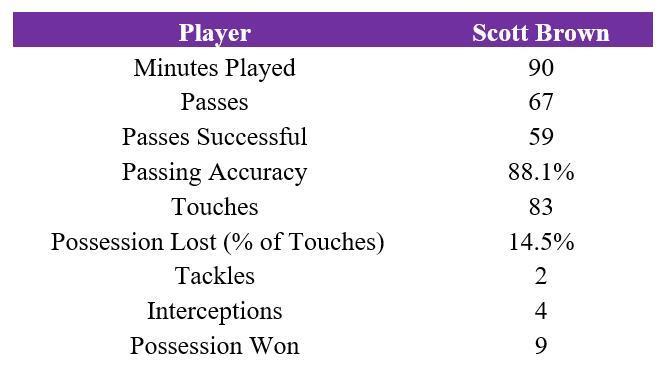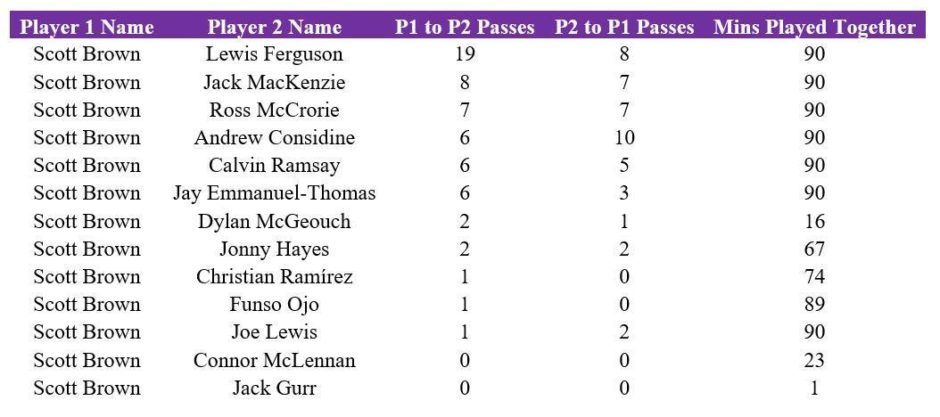If it wasn’t obvious already, it has been underlined in the three Aberdeen games so far how vital player-coach Scott Brown will be on the field for the Dons this season.
When it was announced former Celtic skipper Brown, 36, was set to join Stephen Glass’ Reds revolution towards the end of last term, there was uncertainty whether he would be a bit part-player, focusing more on developing his coaching chops, or vice-versa.
Glass would later make clear he saw Brown as a crucial player going into this campaign, and we published a piece in May which showed Brown, in his final season at Parkhead and for all Celtic’s issues, remained a very reliable operator in holding midfield, winning possession and seldom giving it away.
However, questions naturally remained, despite his unprecedented career trophy haul, about how Brown would fit in as part of Glass’ personnel and tactical changes over the summer at Aberdeen.
On the evidence we’ve seen so far, he hasn’t just slotted in seamlessly – the new team captain looks to be crucial part of the Reds’ approach in defending their own goal and in getting the ball forward.
Brown allows Considine and McCrorie to keep it on the deck
Anyone who watched the two legs of the 5-3 aggregate win over Swedes BK Hacken could have told you how important Brown was over the 180 minutes, with part of his contribution, of course, nothing to do with the ball – I’m talking about his constant directing of team-mates, winding up the opposition, his chats with the referee over every marginal call and so on.
However, detailed Opta stats from the Premiership opening 2-0 win over Dundee United on Sunday, which we didn’t have for the Euro matches, allow us to go in-depth with images visualising Brown’s influence in the play.
Again, anyone with eyes would have been able to work out the former Scotland captain’s presence allowed centre-halves Andy Considine and Ross McCrorie to keep the ball on the deck and play out from the back against United.
Every time the United attackers tried to turn the screw on Considine and McCrorie when they had the ball in dangerous areas, Brown was there to offer the out-ball and, with his, perhaps underrated, technical qualities and composure, simultaneously defuse any danger and get Aberdeen back on to the front foot.
But there are multiple useful graphics from the Dundee United clash which show Brown’s role in taking the ball from 23-year-old McCrorie – who is still finding his feet in central defence – and veteran Considine:
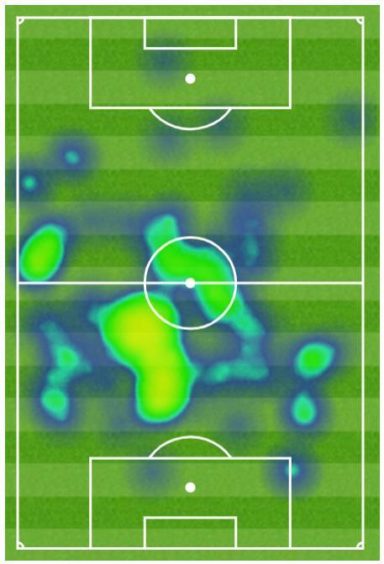
Scott Brown’s heatmap v Dundee United shows he spent the 90 minutes mainly patrolling the area between Aberdeen’s box and halfway.
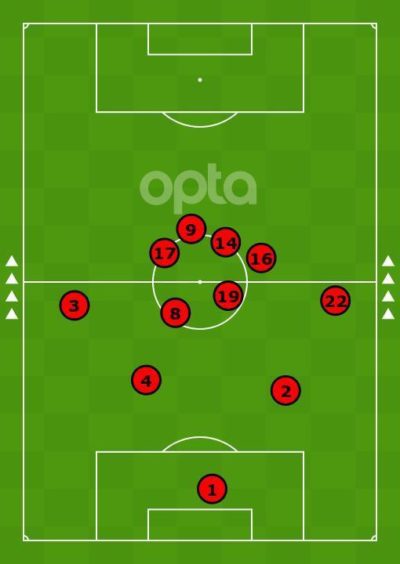
Scott Brown’s average position (no.8) v Dundee United also confirms he was the closest man to both Andy Considine (no.4) and Ross McCrorie (no.2) throughout the game.
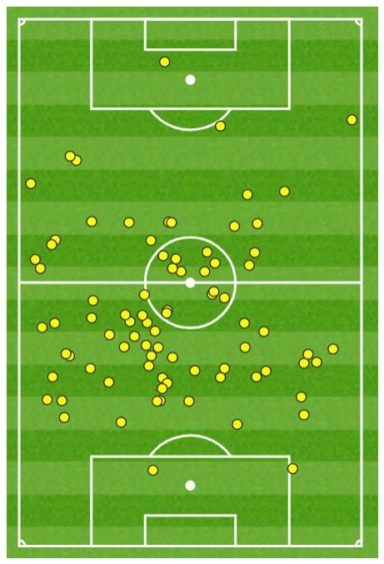
The touchmap for Scott Brown v Dundee United also helps us visualise his role as Aberdeen’s holding midfielder.
Getting Aberdeen back on the attack
Of course, helping the defence under pressure is just one part of Brown’s remit – but what did he do with possession once he had it? Well, crucially for a player linking defence and midfield, he didn’t lose it.
As you’ll see below, 59 of Brown’s 67 passes against Dundee United were completed, with only 14.5% of his 83 touches resulting in the Reds turning over possession to the Tangerines. His tidiness with the ball hasn’t dwindled over the summer.
The rationale behind Brown’s passing choices, having taken the heat off the centre-backs in taking the ball, was clearly to get it to the players who could hurt United as quickly as possible.
Another table below shows who Brown gave the ball to most (as well as who he received it from). Look at the names – chief among the is the driving midfield presence of Lewis Ferguson, whose through-ball to Jonny Hayes set up the opener.
Understandably McCrorie and Considine feature in the top spots, but the others – Jack MacKenzie, Calvin Ramsay and Jay Emmanuel-Thomas – all make sense.
MacKenzie and Ramsay were both energetic and fearless at full-back – the latter teeing up Aberdeen’s second – and Brown knows feeding them is a perhaps the fastest way of putting the Dons back on to the attack.
It’s also no surprise to see striker “JET” received the ball from Brown six times. The Englishman looks like he’ll be the Dons creative spark under Glass with his tendency to drop deep for ball before utilising his quick feet and vision to play in strike partner Christian Ramirez, or widemen like Hayes or Ryan Hedges.
The graphic below is also useful in understanding where Brown tended to pass the ball against Dundee United. The mostly-red lines show a pattern of short balls sent out wide to the young, marauding right- and left-back, as well as the similarly short, accurate passes into the likes of fellow centre mid Ferguson and forward Emmanuel-Thomas.
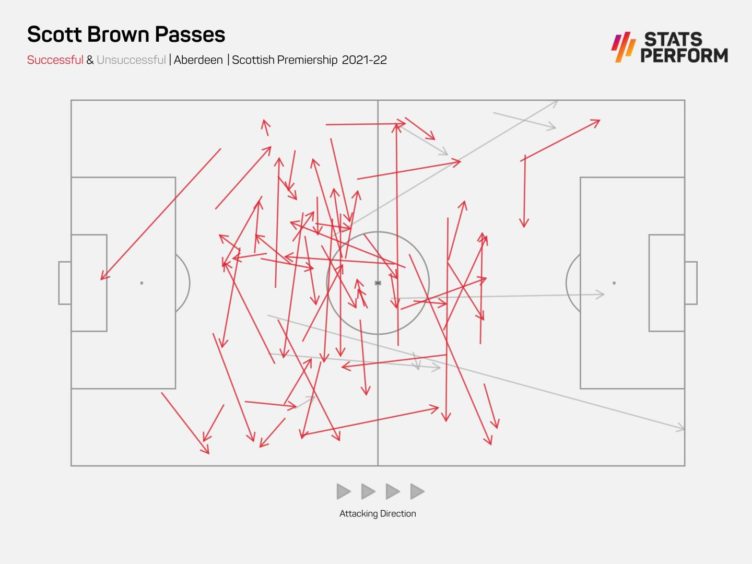
As physically fit as he clearly remains, Brown has shown the consequences of age don’t look to be an issue in his role – not with his football brain, technical tidiness, aggression and the experience built up over close to two decades as a professional.
These are qualities which will likely be brought to bear at heart of the Aberdeen side all season long – including tomorrow night’s Conference League third qualifying round first leg against Breidablik of Iceland.
To sign up for our dedicated Aberdeen FC and Highland League newsletters, click HERE.
🔴 @AberdeenFC's new sensation Calvin Ramsay nails down right-back slot ahead of Breidablik clash
⚽️ @Chris_Ramirez17 has the all-important striker's instinctThis week's Northern Goal podcast is out now:
Apple: https://t.co/SU07unYRip
Spotify: https://t.co/c3Sjg3IEWO pic.twitter.com/cjvQ6cUIfB— EveningExpress Sport (@ee_sport) August 3, 2021

